Background to Sekigahara 1600 in Tenkatoitsu.

In 1598, with his health clearly failing, Hideyoshi called a meeting that would determine the Council of Five Elders, who would be responsible for ruling on behalf of his son after his death. The five that were chosen as regents (tairō) for Hideyori were Maeda Toshiie, Mōri Terumoto, Ukita Hideie, Uesugi Kagekatsu, and Tokugawa Ieyasu himself, who was the most powerful of the five.
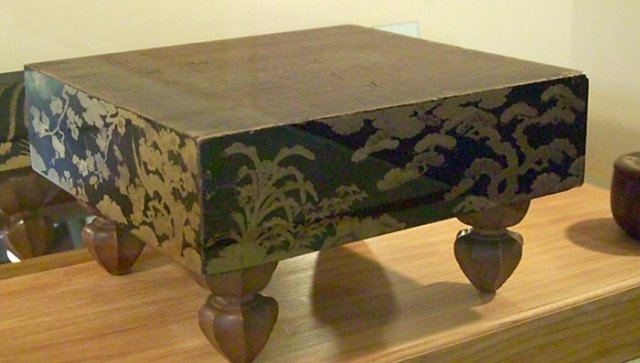
Adversaries at one time, Hideyoshi & Ieyasu became partners, sharing many games of Go on this board
This change in the pre-Sekigahara power structure became pivotal as Ieyasu turned his attention towards Kansai; and at the same time, other ambitious (albeit ultimately unrealized) plans, such as the Tokugawa initiative establishing official relations with Mexico (New Spain at the time), continued to unfold and advance.
Hideyoshi, after three more months of increasing sickness, died on September 18, 1598. He was nominally succeeded by his young son Hideyori but as he was just five years old, real power was in the hands of the regents. Over the next two years Ieyasu made alliances with various daimyōs, especially those who had no love for Hideyoshi. Happily, for Ieyasu, the oldest and most respected of the regents, Toshiie Maeda, died after just one year.

The allegiance, and relationship from one clan to another was incredibly complex.
With the death of Toshiie in 1599, Ieyasu led an army to Fushimi and took over Osaka Castle, the residence of Hideyori. This angered the three remaining regents and plans were made on all sides for war. It was also the last battle of one of the most loyal and powerful retainers of Ieyasu, Honda Tadakatsu.
Opposition to Ieyasu centered around Ishida Mitsunari, a powerful daimyō who was not one of the regents. Mitsunari plotted Ieyasu’s death and news of this plot reached some of Ieyasu’s generals. They attempted to kill Mitsunari but he fled and gained protection from none other than Ieyasu himself. It is not clear why Ieyasu protected a powerful enemy from his own men but Ieyasu was a master strategist and he may have concluded that he would be better off with Mitsunari leading the enemy army rather than one of the regents, who would have more legitimacy.

Nearly all of Japan’s daimyōs and samurai now split into two factions—The Western Army (Mitsunari’s group) and The Eastern Army (anti-Mitsunari Group). Ieyasu supported the anti-Mitsunari Group, and formed them as his potential allies. Ieyasu’s allies were the Date clan, the Mogami clan, the Satake clan and the Maeda clan. Mitsunari allied himself with the three other regents: Ukita Hideie, Mōri Terumoto, and Uesugi Kagekatsu as well as many daimyō from the eastern end of Honshū.

Others would prove to play a vital role in the battle for what to did not do. Their loyalty was questionable.
In June 1600, Ieyasu and his allies moved their armies to defeat the Uesugi clan, which was accused of planning to revolt against Toyotomi administration. Before arriving at Uesugi’s territory, Ieyasu received information that Mitsunari and his allies had moved their army against Ieyasu. Ieyasu held a meeting with the daimyōs, and they agreed to follow Ieyasu. He then led the majority of his army west towards Kyoto. In late summer, Ishida’s forces captured Fushimi.
Ieyasu and his allies marched along the Tōkaidō, while his son Hidetada went along the Nakasendō with 38,000 soldiers. A battle against Sanada Masayuki in Shinano Province delayed Hidetada’s forces, and they did not arrive in time for the main battle.
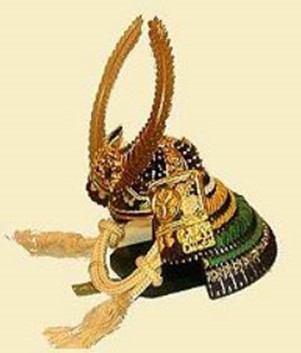
Ieyasu’s helm
This battle, fought near Sekigahara, was the biggest and one of the most important battles in Japanese feudal history. It began on October 21, 1600, with a total of 160,000 men facing each other. The Battle of Sekigahara ended with a complete Tokugawa victory. The Western bloc was crushed and over the next few days Ishida Mitsunari and many other western nobles were captured and killed. Tokugawa Ieyasu was now the de facto ruler of Japan.

Immediately after the victory at Sekigahara, Ieyasu redistributed land to the vassals who had served him. Ieyasu left some western daimyōs unharmed, such as the Shimazu clan, but others were completely destroyed.
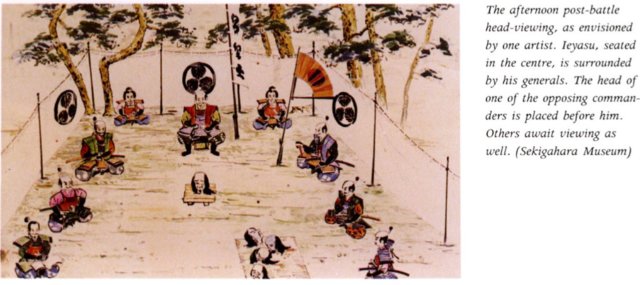
On March 24, 1603, Tokugawa Ieyasu received the title of shōgun from Emperor Go-Yōzei.[18] Ieyasu was 60 years old. He had outlasted all the other great men of his times: Nobunaga, Hideyoshi, Shingen, Kenshin. As shōgun, he used his remaining years to create and solidify the Tokugawa shogunate, which ushered in the Edo period, and was the third shogunal government (after the Kamakura (Minamoto) and the Ashikaga). To consolidate his rule, Ieyasu gathered his men for one last battle to eliminate the remnants of the Toyotomi clan in Osaka Castle. He succeeded at the Siege of Osaka and removed all of the possible threats to his power. He claimed descent from the Minamoto clan, by way of the Nitta clan. His descendants would marry into the Taira clan and the Fujiwara clan. The Tokugawa shogunate would rule Japan for the next 250 years.
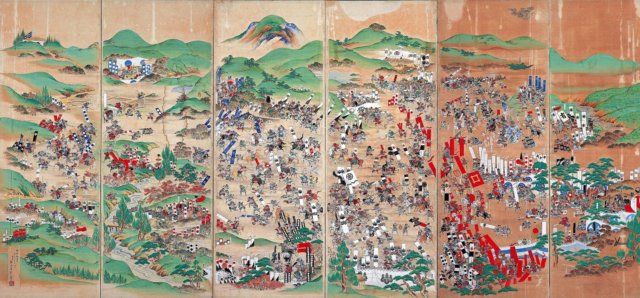
Sekigahara Kassen Byōbu (『関ヶ原合戦屏風』), Japanese screen depicting the Battle of Sekigahara (関ヶ原の戦い). This 1854 replica recreates the original Hikone-jō Bon Sekigahara Kassen Byōbu (彦根城本『関ヶ原合戦屏風』[1]) by Sadanobu Kanō (狩野貞信) from the 1620s and was a treasure of the Lord Ii of Hikone
Sources:
https://www.nakasendoway.com/the-story-of-the-battle-of-sekigahara/
Wiki references abound.
Osprey Campaign 040, The final struggle for power.
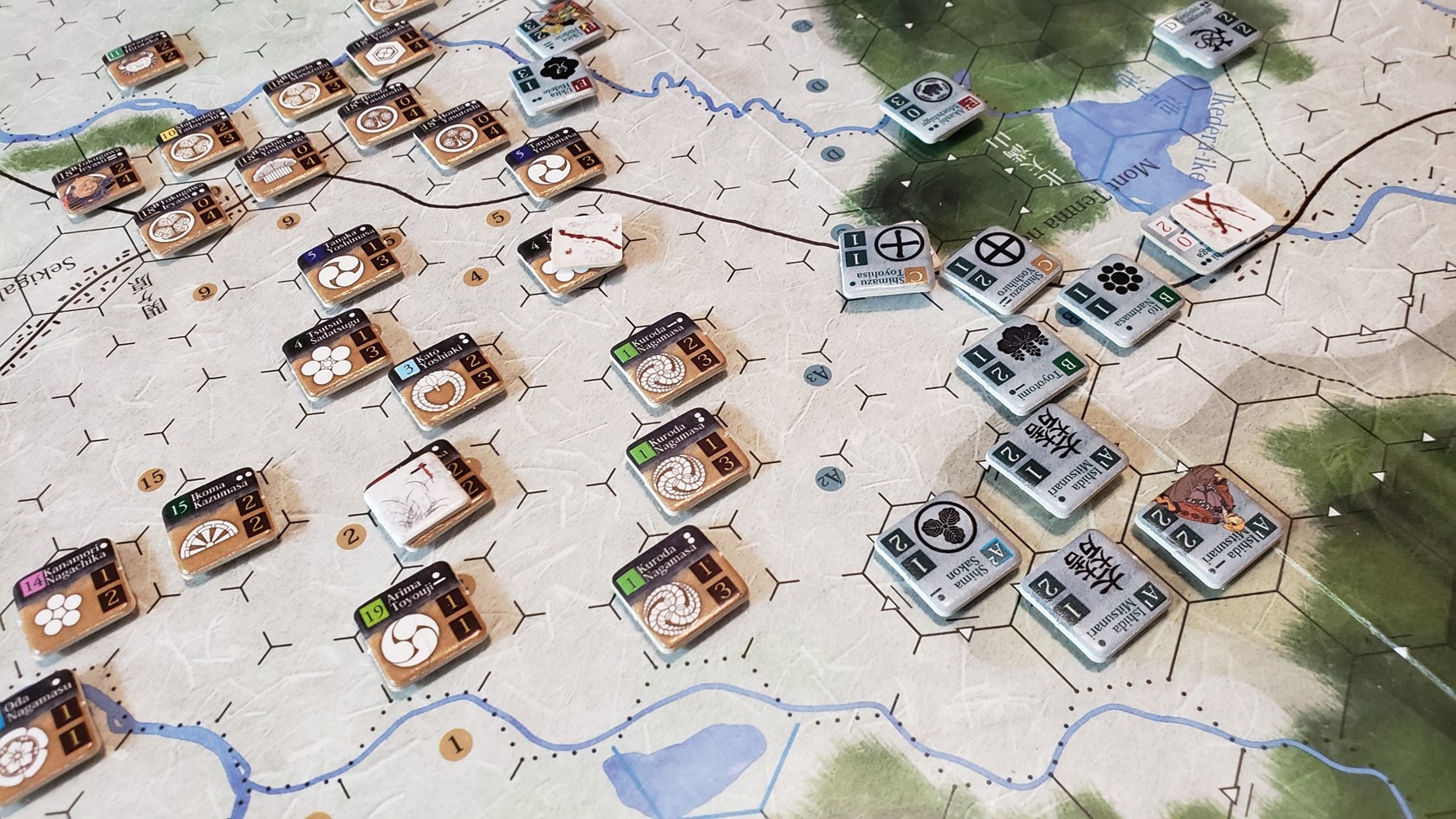
One thought on “1600 Battle of Sekigahara”
Comments are closed.